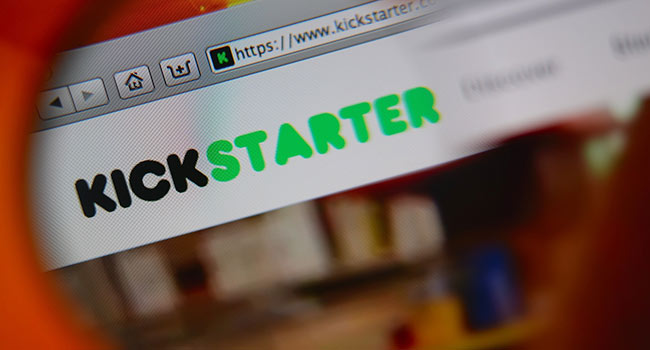••• travel research
Passengers feel airlines are not listening to them
Heads in the clouds
 About two-thirds of all U.S. and U.K. consumers surveyed by Clarabridge, a Reston, Va., customer experience management firm, report that when they deliver feedback on their air travel experience, complaints go unrecognized or unaddressed by airlines.
About two-thirds of all U.S. and U.K. consumers surveyed by Clarabridge, a Reston, Va., customer experience management firm, report that when they deliver feedback on their air travel experience, complaints go unrecognized or unaddressed by airlines.
Clarabridge surveyed more than 1,200 consumers in both the United States and United Kingdom, respectively. In both surveys respondents were between the ages of 18 and 60. The survey asked airline consumers share their feedback on all aspects of their air travel experience including personal preferences, expectations and key complaints. Clarabridge also analyzed more than 750,000 online ratings/reviews and mentions shared on public forums from Facebook, Airline Quality and TripAdvisor to capture the voice of the customer.
The results illuminate customers’ behaviors and expectations around air travel to enable airlines to improve overall satisfaction and increase loyalty. In today’s digitally-connected world, where a customer’s negative interaction has the potential to go viral, it is crucial for airlines to understand what their customers are saying and implement that feedback into positive change. Listening to the customer not only creates a more enjoyable experience for air travelers but ultimately saves airlines countless dollars in preventing customer experience crises before they arise.
The survey unveiled three critical findings:
Consumers believe airlines are not listening. Sixty-nine percent and 73 percent of U.S. and U.K. consumers, respectively, have never submitted a complaint, nor delivered feedback to an airline company. Within both markets, about two-thirds of all consumers report that even when they do deliver feedback on their experience, complaints go unrecognized or unaddressed. This suggests that it is imperative for airlines to accurately collect and respond to feedback to ensure customers know they are being heard and that their feedback is being acted upon in order to provide the best possible travel experience.
Attitude matters. Flight staff and crew attitude drives loyalty even more than affordable flights. In the U.S., 38 percent of customers are loyal to a particular airline based on how they are treated, compared to 35 percent of customers who choose their airlines based on price. Friendly staff is more indicative of whether an individual recommends an airline to a future traveler, with 33 percent of all U.K. customers citing it as the primary reason for their recommendation. Therefore, airlines must use the customer voice to adjust their policies, procedures and training and encourage the entire organization – from teams both in the sky and back at headquarters – to instill a culture of friendliness and positivity so that customers keep coming back.
It’s time to improve digital feedback channels. In both the U.S. and the U.K., customers expressed a preference for digital feedback. Of the customers who do provide feedback, 46 percent and 42 percent in the U.K. and U.S. do so by e-mail and 13 percent and 11 percent, respectively, by social media. Across both markets, more than half of all customers utilize digital tools to comment on their experience. In the U.K. only one in 10 complaints actually involves a human interaction. In conjunction with an increase in digital feedback, the data suggests that airlines must improve and invest in the technical infrastructure necessary to support customer complaints via digital means, be it on social media or in-app. This will not only satisfy customers but also reduce the weight and cost of in-person channels.
••• employee research
Workers want workplaces that make a difference
Employers, increase your social involvement
 A survey reveals that more than half (57 percent) of those working in America’s largest companies feel that their employers should play a more active role in addressing important societal issues. And there is even greater support when looking at specific issues like equal opportunity in the workplace, health care reform and renewable energy. Other key findings from the nationwide survey – Corporate America’s POV – from St. Louis, Mo.-based opinion research and issues management consultancy Povaddo, include:
A survey reveals that more than half (57 percent) of those working in America’s largest companies feel that their employers should play a more active role in addressing important societal issues. And there is even greater support when looking at specific issues like equal opportunity in the workplace, health care reform and renewable energy. Other key findings from the nationwide survey – Corporate America’s POV – from St. Louis, Mo.-based opinion research and issues management consultancy Povaddo, include:
- 50 percent of workers feel their company and/or CEO is facing growing internal and/or external pressure to be more vocal on important societal issues.
- 45 percent say corporate America’s role in addressing issues is more important than it was a year ago compared to just 11 percent who say less important.
- 44 percent foresee corporate America’s role in addressing societal issues increasing over the next year; only 18 percent see it decreasing.
Despite these figures, only 35 percent of respondents feel assured that their CEO has a finger on the pulse of employee attitudes towards today’s major societal issues. This is significant because roughly half of those surveyed (45 percent) indicate that the actions a company takes to help influence important societal issues impact their decision to maintain or pursue employment with a company. More specifically, 38 percent say they would be less likely to continue working for the company long-term if their company and/or CEO made zero effort to make a difference on an important societal issue.
Using a series of segmentation questions, Povaddo estimates that 15 percent of the workforce in corporate America can be categorized as “employee activists.” The survey finds that Millennials are three times more likely than Boomers to fall into this category (26 percent versus 9 percent, respectively); there is also a significant gap between those who are in management positions (20 percent) and those who are not (8 percent).
Povaddo defines employee activists as those who meet the following criteria: agree that it’s important to work for a company that’s not afraid to be vocal on important societal issues; would like to see their company and/or CEO be more vocal on important societal issues; strongly agree that it is important to work for a company that shares their values; and are very interested in news, politics and current events.
Povaddo conducted an online survey of n=1,236 individuals throughout the U.S. who work for companies with annual revenues of at least $1 billion. The sample was drawn from Research Now’s panel of over 11 million profiled individuals. The margin of error associated with a sample of this type is ± 2.8 percent. The survey was fielded April 3-10, 2017. The survey was funded by Povaddo and it was not conducted on behalf of any outside organization.
••• innovation research
What not to say to attract funding on Kickstarter
‘Novel’ and ‘useful’ may sap pledges
 Kickstarter campaign creators should take note: The community does not view claims of product novelty and product usefulness as congruent. While the total amount pledged is boosted when a product is said to be useful (or alternatively, novel), claiming that it is both reduces the total amount pledged by 26 percent.
Kickstarter campaign creators should take note: The community does not view claims of product novelty and product usefulness as congruent. While the total amount pledged is boosted when a product is said to be useful (or alternatively, novel), claiming that it is both reduces the total amount pledged by 26 percent.
That’s according to a recent analysis of 50,310 Kickstarter projects, led by researchers from the Singapore Management University, HEC Paris, the University of Technology Sydney and INSEAD.
“Prior research has shown that products that are novel and useful typically succeed in the marketplace,” says study co-author Amitava Chattopadhyay, professor of marketing and the GlaxoSmithKline Chaired Professor of Corporate Innovation at INSEAD. “But when projects make both claims, backers either assume a product’s benefits are inflated, that it carries a high risk of failure or that it divides the crowd between believers and sceptics, making it hard for backers to pick a side.”
“The higher level of uncertainty in the crowdfunding context drives backers to choose modest innovations and shy away from more extreme innovations,” says Cathy Yang, assistant professor of marketing at HEC Paris.
“This is deeply disappointing as the premise of crowdfunding is to support creativity and innovation,” says Anirban Mukherjee, assistant professor of marketing at Singapore Management University. “Entrepreneurs therefore might be advised to frame a project as only novel or only useful, rather than both,” Ping Xiao of the University of Technology Sydney (UTS) says.
Kickstarter is often seen as a haven for innovators as it allows them to circumvent hard-nosed bankers and other risk-averse traditional lenders. But innovation can be a hard sell with the crowd, as explained in the research paper titled “Does the crowd support innovation? Innovation claims and success on Kickstarter,” co-authored by Mukherjee at SMU, Yang at HEC Paris, Xiao at UTS and Chattopadhyay at INSEAD.
Chattopadhyay and his study co-authors accessed a dataset comprising all the projects listed on Kickstarter since its launch in 2009. To focus on the crowd’s appetite for innovation, they eliminated arts-related projects as these tend to be evaluated mostly on the basis of their artistic value. They then kept all the U.S.-based projects that fell in the nine largest remaining Kickstarter product categories.
The final dataset included a total of 50,310 projects. Machine-learning tools were used to extract a list of descriptors from the text, the lead image and video of each project. The number of occurrences of the word “novel” and its synonyms served as a proxy for novelty claims. Conversely, the sum of occurrences of the word “useful” and its synonyms became the measure for claimed usefulness. These numbers were then compared with the individual projects’ funding results.
The data show that claims of novelty and usefulness, taken separately, do increase the total pledge amount. As a matter of fact, they have a very large initial effect. A single claim of novelty increases project funding by about 200 percent, while a single claim of usefulness leads to an increase of about 1,200 percent, as compared to projects devoid of any such claim.
“As opposed to the regular marketplace, where buyers feel protected by consumer laws, crowdfunding backers may face a very high level of uncertainty,” says Chattopadhyay. After all, the developers may fail to come up with the final product or they may need to change specifications along the way. It’s been shown that consumers prefer more traditional products when their perception of risk is high. Inventors that claim that their product is very innovative, i.e., both highly useful and novel, may find it more difficult to get funded because of a higher risk perception by the crowd.
••• shopper insights
Managers detail order-fulfillment challenges
Of BORIS and BOPIS
As the lines between online and in-store continue to blur, order fulfillment (29 percent) and limited staffing (29 percent) are evenly split as the biggest challenge for retailers at the store level, followed by inventory visibility (24 percent) and scheduling/workforce management (18 percent), according to results from Scottsdale, Ariz.-based JDA Software Group Inc.’s second annual Voice of the Store Manager survey.
 The secret to retailer success lies in evolving the store into a place to solve customer problems, relying on the speed and convenience of fulfillment to compete in today’s unified commerce environment. On the store-execution level, store managers are trying to master the combination of order fulfillment, inventory visibility and staffing needs to keep up with customer demands.
The secret to retailer success lies in evolving the store into a place to solve customer problems, relying on the speed and convenience of fulfillment to compete in today’s unified commerce environment. On the store-execution level, store managers are trying to master the combination of order fulfillment, inventory visibility and staffing needs to keep up with customer demands.
When it comes to challenges with store inventory, survey respondents find that inaccurate data (31 percent) and limited stock and slow replenishment (31 percent) are the biggest challenges for operations. However, the majority of store managers (64 percent) are using technology in some capacity to check store inventory availability, whether it be real-time inventory visibility via mobile or wearable devices (33 percent) or a central computer system (31 percent).
“Based on the results of our survey, it’s clear that retailers are making progress to better handle operations in today’s retail environment but inventory and staffing needs are often a bottleneck,” says Jim Prewitt, vice president, retail industry strategy, JDA. “It’s not a question of whether stores will evolve but rather a question of ‘to what?’ Successful retailers are looking at how quickly their supply chain and store operations need to react and adapt.”
While there has been a lot of speculation around a retail apocalypse, new fulfillment options are offering ways for stores to provide ease and convenience to busy customers while driving traffic back into stores. Forty-four percent of respondents said their stores offer buy online ship from store services; additionally, 41 percent offer buy online pickup in-store (BOPIS), 40 percent offer buy in-store ship to home and 38 percent offer buy online return in-store (BORIS).
According to store managers, BOPIS services (41 percent) and buy online ship from store services (40 percent) have seen the largest increase in customer usage. All fulfillment options rely heavily on inventory visibility and staffing for pick, pack and ship in order to meet customer fulfillment timelines and respondents have staff allocated to support BOPIS (65 percent), BORIS (64 percent), buy in-store ship to home (61 percent), buy online ship to store (59 percent) and buy in-store ship to home/store from another store (49 percent).
Forty-one percent of store managers believe lack of visibility across inventory is the biggest difficulty when it comes to BOPIS services and 36 percent say their stores currently offer a discount to customers who utilize BOPIS services. Another 14 percent are currently testing/researching options.
“As customer expectations continue to rise, it will be crucial for brick-and-mortar stores to streamline how they fulfill customer orders and work to draw in shoppers with incentives for in-store fulfillment options like BOPIS, as verified by our recent JDA Consumer Survey,” says Prewitt. “In the future, we foresee some stores evolving into distribution centers, fulfilling 100 percent of customer demand, while others will morph into showrooms with centralized fulfillment.”
The other area for improvement for stores is the influx of inventory due to BORIS offerings, with two in three store managers reporting some difficulty with the service. Thirty percent of respondents are unsure of what to do with the additional inventory received through BORIS services and lack direction as to whether to keep it at the store or return to a distribution center or even another store. Additionally, nearly 30 percent of store managers reported a staff-related concern with regard to BORIS.
With the rising popularity of the gig economy, more than 40 percent of store managers are already reporting that a small number of their store staff (less than 25 percent) are part of the gig economy. One in four store managers are exploring the possibility of leveraging additional labor – such as short-term contractors or freelance workers – outside of the traditional workforce.
According to respondents, 60 percent of store managers planned to hire the same amount of temporary labor for the 2017 holiday season as they did last year; while 24 percent planned to hire more this year. However, the focus of the seasonal staff may be changing to meet customer demand; over 40 percent of seasonal holiday hires will be for fulfillment at stores/warehouses and not customer-facing. This was even higher among respondents in rural areas, who were far more likely (61 percent) to hire fulfillment staff rather than customer-facing staff. The other fulfillment area that store managers are planning to increase hiring for is BOPIS, with one in three respondents hiring temporary staff specifically for the service this year.
“As store operations change with increasingly complex order fulfillment capabilities, the demands for staffing will change as well,” says Prewitt. “Based on our survey results, we predict there will be an uptick in tailored staffing hires for both BOPIS and ship-from-store services.”
JDA collected responses from 252 U.S.-based retail store managers in August 2017 via a third-party provider to determine the findings of its 2017 Voice of the Store Manager survey.
